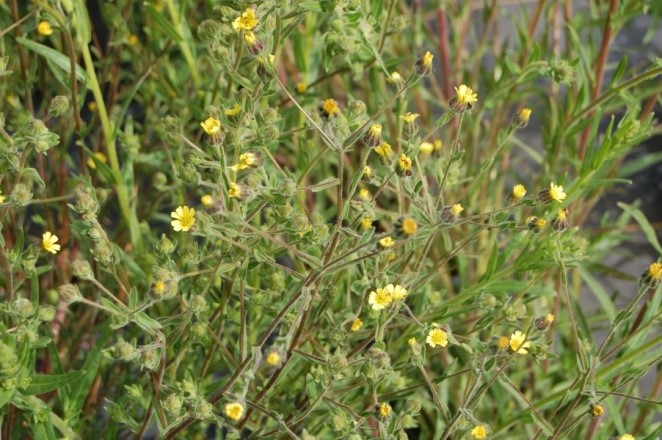
Facts
- Member of the Asteraceae family, which is one of the largest
families of flowering plants on the planet (Encyclopedia
Britannica 2014).
- The genus name Madia comes from Chilean dissent
(Sonoma 2013).
- Native species to the upper northwest coastal regions of the
United States (Krimmel and Pearse 2013), living within a range
from 0 - 2590 meters in altitude (Calflora 2014).
- Madia gracilis is able to grow in regions of dry and less
nutritious soils, making it unlike many other plants in the
world (Krimmel and Pearse 2013).
- Because of the ability to live in poor soil conditions, this
plant is used in many ecosystem restoration projects (Ross
2012).

- Grows anywhere between 4-40 inches in hight at full maturity
(Ross 2012).
- Uses glandular trichomes to secrete a sticky substance that
protects itself from potential insect predators (Krimmel and
Pearse 2013).
- Creates hard seeds to be distributed throughout the
environment and develope into new plants (Campbell et. al.
2008).
- The seeds are very nutritious and are used as a food source
by many different species, including humans (Sonoma 2013, Ross
2012).
- The brightly colored array of leaves of the Madia gracilis
are crucial to attracting pollinators to the plant
(Celedón-Neghme 2006).
Return Home, or visit our
References

